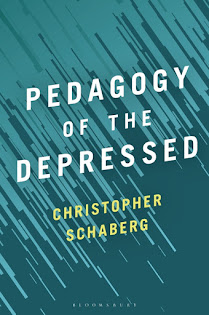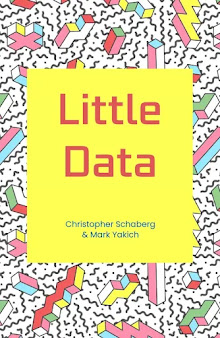Han in carbonite, about the same dimensions as my iPhone SE
I got off Twitter last month, and wrote a bit about why for Inside Higher Ed.
First, there was the lightening.
But wait—back up.
I had tapered off my Twitter usage over the last six months, since I dropped and shattered my iPhone last summer. When I replaced my phone with an older model that my partner had cast off when she upgraded a couple years ago, I didn’t download the Twitter app. I realized then how much I had just been thumb-scrolling through the idle minutes and hours of the days. (I also didn’t log in to my email on the recycled phone; another epiphany that followed was just how much work I had been doing on my phone, at odd hours. “Job spill,” indeed.)
I used my Twitter account less and less throughout the school year, mostly retweeting other people’s news and promoting a book of mine that came out in January, Pedagogy of the Depressed.
All winter I had been contemplating getting off Twitter altogether, because I was becoming more and more aware of how even a few seconds on the website usually made me either A) annoyed, B) jealous, or C) outright angry. Bird sounds in the morning are often gentle and pleasant to wake up to; tweets, on the other hand are blaring and distracting. The website could be called SCREAM instead.
I was raised in a cult and escaped it, so I am highly allergic to fanatical leaders and charismatic power mongers. I never joined Facebook, because the founder gave me the willies. I tried Instagram for a year, but once Facebook acquired it, I deleted my account. So when I read about the wealthiest person in the world attempting to buy Twitter, I knew my days there were numbered. (Even if the sale falls through, just the thought of such an absurd gesture was enough.)
I requested my archive of tweets and all the subfolders of data that come with this package; not that I’ll ever weed through any of the files, realistically.
There was some good news for a book series that I co-edit: one of our titles got a nice treatment in a New Yorker article online. I dutifully retweeted the piece.
I liked someone’s clever tweet about…something. I can’t even remember.
Then on a Thursday evening as I was cleaning up after dinner, I simply opened up my Twitter profile, clicked the red button for Deactivate, and learned that the company was sorry to see me go.
Then, the lightening happened. I could feel a physical, palpable lifting as if off my shoulders. Who knew I was carrying Twitter around with me all this time, even as I used it less and less? Maybe it should be called Burden: a gray cinderblock for the icon.
A quiet descended—or maybe it rose up from the ground. Either way, it permeated.
I sat down on the floor and cuddled with my cat for a few minutes.
I plucked The Great Gatsby from the bookshelf (my partner’s tattered copy from high school!) and read the first few pages before bed.
I was off Twitter, for good.
Those 4600 “followers”—would they miss me? Probably not. No one would probably even notice: Social media isn’t able to capture the beauty of absence. Would I miss the people that I followed? If so, I’ll send them an email to say hello. So many of my contacts on Twitter were people I worked with in some capacity or another, anyway: fellow professors, current and former students, writers, editors, and readers. There would be other ways to cross paths. Quieter ways.
That Saturday morning I leafed through Thoreau’s journals, and texted a few passages to my friend Mark, who gave me the book a couple years ago. We regularly trade timely or otherwise curious sentences from the pages. May 23, 1854: “In me is the sucker that I see.”
Later in the day I read an article at the Atlantic on my phone that my friend Ian had just published, about slushies. It was great. Ian had texted the link to me and our mutual friend Tim, and we bantered about the article over a text thread. I hadn’t needed Twitter to find this piece, or “engage” with it—or my friends, for that matter.
On Monday I would reply to emails on my computer, at my office. I wouldn’t toggle over to the Twitter website, because I was not there any longer. I wouldn’t become distracted, feel competitive, or get upset by the incessant visual cacophony. (Sure, I’ll still feel all these feelings—just not provoked relentlessly by that one website.)
I don’t know what I’ll do with all this new time, but I’m sure I’ll figure something out. Hell, I might even start blogging more regularly again.
I might even just listen to the birds outside, for a while. It’s so quiet, after all.






































